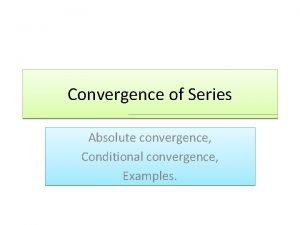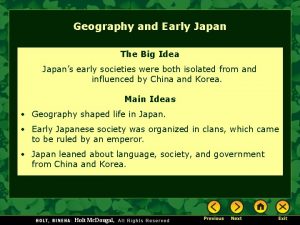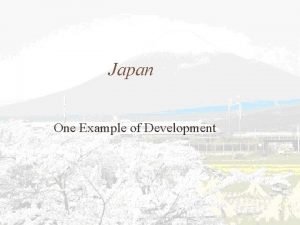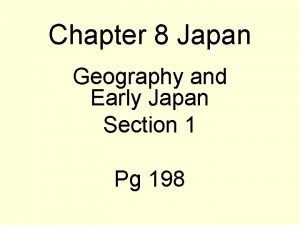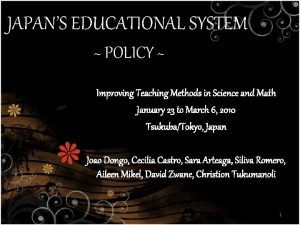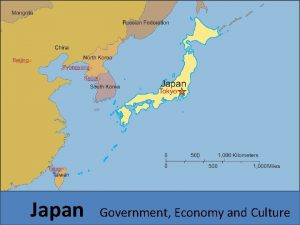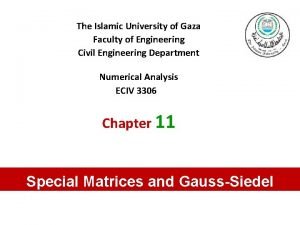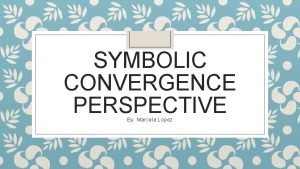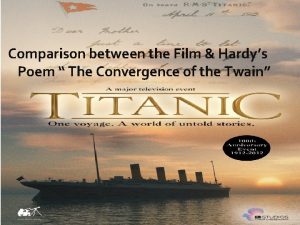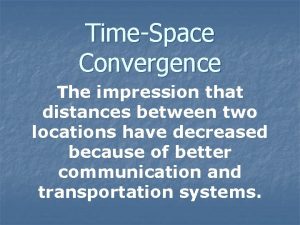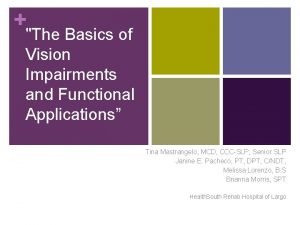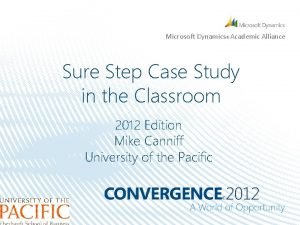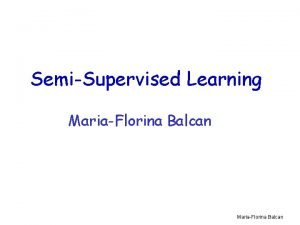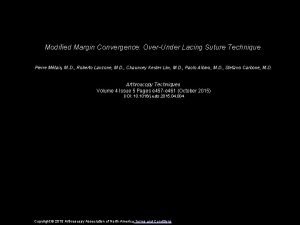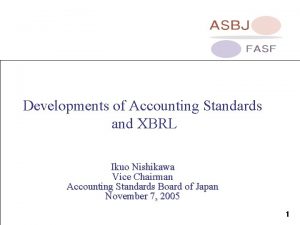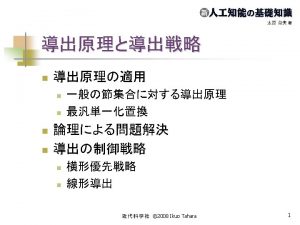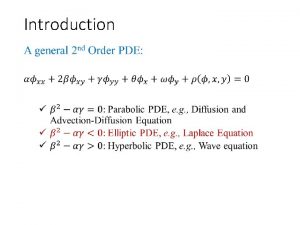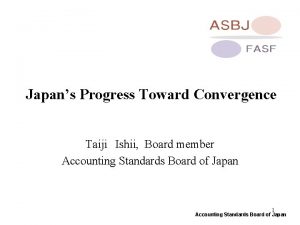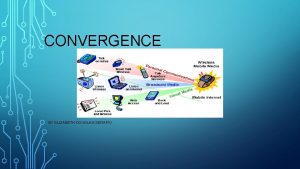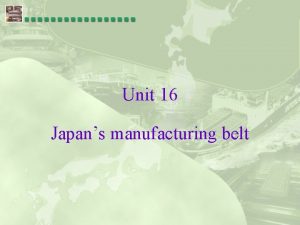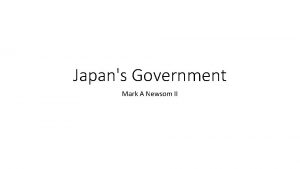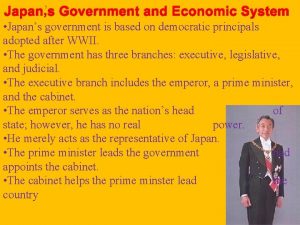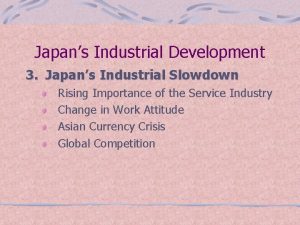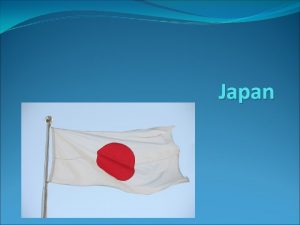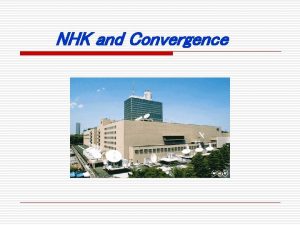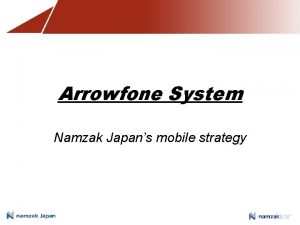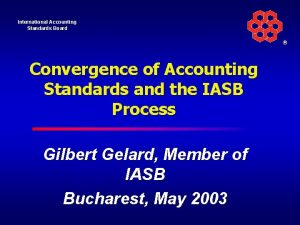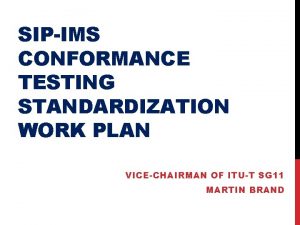Japans Progress Toward Convergence Ikuo Nishikawa vicechairman Accounting



























- Slides: 27

Japan’s Progress Toward Convergence Ikuo Nishikawa, vice-chairman Accounting Standards Board of Japan 1 Accounting Standards Board of Japan

1. Introduction l Basic position of the ASBJ on international convergence l Current situation surrounding the ASBJ l Joint convergence project with the IASB l Representative meeting with the FASB 2 Accounting Standards Board of Japan

2. Basic position of the ASBJ on international convergence l ‘‘ Medium-term operating policy of the ASBJ’’ in July 2004 Ø The ASBJ agrees with the objective of international convergence to achieve high-quality accounting standards, since it is beneficial to respective capital markets around the world Ø The convergence should be attained through the process of assessment and selection by market participants from international accounting standards which are mutually accepted in major capital markets. Ø In order to promote international convergence into high-quality accounting standards, the ASBJ will establish closer relationship with other accounting standard setters around the world. 3 Accounting Standards Board of Japan

3. International Situation (1) l. Technical advice on equivalence of the third country GAAP (Japan, U. S. and Canada) was issued by CESR in July 2005. ØThree countries GAAP are, taken as a whole, equivalent to IFRSs. ØRemedies required (Japan: 26, US: 19, Canada: 14) l. Draft proposal for postponement of the equivalence decision between IFRS and US GAAP, Japanese GAAP and Canadian GAAP for two years issued by European Commission in April 2006. The ASBJ released “Statement on Japan’s progress toward convergence between Japanese GAAP and IFRSs” on January 31, 2006. 4 Accounting Standards Board of Japan

3. International Situation (2) l. Discussion on “roadmap” between EU and SEC in April 2005 ØThe IASB and the FASB released the new convergence plan in February 2006. l. Progress of other countries ØCanada:Canadian standards (for public companies) will be converged to IFRS by 2011. ØChina:Started the convergence project with the IASB 5 Accounting Standards Board of Japan

4. Capital Markets in Japan l Further globalization Ø Total value of Japanese stock markets: US 5 trillion (comparable with those in the U. S. and European markets) Ø Overseas investors’ share of equity trading: 33. 7% Ø Overseas investors’ share of ownership : 23. 7% (2004 Survey of Tokyo Stock Exchange) 6 Accounting Standards Board of Japan

5. Development of Japanese GAAP(1) l Accounting standards developed by the ASBJ in 2005 will contribute to the convergence. (e. g. ) Ø Share-based payments Ø Presentation of net assets in the balance sheet Ø Statement of changes in net assets 7 Accounting Standards Board of Japan

5. Development of Japanese GAAP(2) l The following major accounting standards are also effective or to be effective this year. Ø Impairment of Fixed Assets(effective for FY beginning after April 1, 2005) Ø Business Combination(effective for FY beginning after April 1, 2006) 8 Accounting Standards Board of Japan

6. Importance of Convergence Dramatically Increased l Joint convergence project with the IASB l Convergence needs to be accelerated, in consideration of changes in surrounding environments. 9 Accounting Standards Board of Japan

7. Joint Project with the IASB (1) l. Progress to date ØConvergence meeting has been held semiannually in Tokyo and London since March 2005. Ø 6 issues are selected for the first phase. ØExchange of views on the basic concepts of accounting standards has been made continuously. 10 Accounting Standards Board of Japan

7. Joint Project with the IASB (2) l Issues discussed in the first phase Ø Valuation method of inventories (IAS 2) Ø Segment reporting (IAS 14) Ø Related party disclosure (IAS 24) Ø Uniformity of accounting policies on overseas subsidiaries (IAS 27) Ø Investment property (IAS 40) Ø Cost of issuing new shares (IAS 32)* *Added at the second meeting (Recognized as an expense or as a deduction from owners’ equity) 11 Accounting Standards Board of Japan

7. Joint Project with the IASB (3) (1 -1) Additional topics for the first phase l Asset retirement obligation(ARO) Ø ARO: Dismantling and removing cost assumed at the retirement or the decontaminating cost required by existing laws or contracts Ø Under IFRS and U. S. GAAP, estimated cost is capitalized as a part of the cost of the PP&E while ARO is recognized as a liability. Ø Deliberate recognition of ARO under Japanese GAAP 12 Accounting Standards Board of Japan

7. Joint Project with the IASB (4) (1 -2) Additional topics for the first phase l Construction contract Ø Under IFRS and U. S. GAAP, the percentage of completion method is required. Ø Deliberate Japanese GAAP under which both the completed -contract method and the percentage of completion method are allowed Ø Deliberate the case when outcome of a construction contract cannot be estimated reliably 13 Accounting Standards Board of Japan

7. Joint Project with the IASB (5) (1 -3) Additional topics for the first phase l Disclosures of FV of financial instruments Ø Under IFRS and U. S. GAAP, FV of all financial instruments is disclosed in the footnote. Ø Deliberate rationale to expand FV disclosure to all financial instruments (ex. loans, non-current receivables and loan-payables) in the footnote under Japanese GAAP 14 Accounting Standards Board of Japan

7. Joint Project with the IASB (6) (2) Assessment of the first phase l Steady progress in deliberation towards convergence l Improved mutual understanding l Need for action in light of changing conditions domestically and internationally 15 Accounting Standards Board of Japan

7. Joint Project with the IASB (7) (3 -1) Current Plan l From “phased approach” to “whole picture approach” Ø Entire picture of convergence process Ø Classify “short-term project” and “longer-term project” Ø Review regularly differences and progress of deliberation (“on-going” process) 16 Accounting Standards Board of Japan

7. Joint Project with the IASB (8) (3 -2) Current Plan l Short-term items (including 9 items) Ø Eliminate or find a way to eliminate major differences by 2008 l Longer-term items Ø Differences primarily due to conceptual frameworks or legal restrictions, and items being discussed between the IASB and the FASB 17 Accounting Standards Board of Japan

7. Joint Project with the IASB (9) l Short-term items 1. 2. 3. 4. 5. 6. Ø Issues discussed in the first phase Inventories(valuation method) Segment reporting Related party disclosures Uniformity of accounting policies in overseas subsidiaries Investment properties Cost of issuing new shares 18 Accounting Standards Board of Japan

7. Joint Project with the IASB (10) l Short-term items(cont. ) Ø Additional topics for the first phase 7. Construction contracts 8. Asset retirement obligation 9. Disclosure of financial instruments at fair value (footnote) Ø Other 10. Leases 19 Accounting Standards Board of Japan

7. Joint Project with the IASB (11) l. Longer-term items ØItems which are currently discussed or will be discussed between the IASB and the FASB. The ASBJ will make comments on these items to the IASB and the FASB on a timely basis from the early stages. 20 Accounting Standards Board of Japan

7. Joint Project with the IASB (12) l Longer-term items (cont. ) 1. 2. 3. 4. 5. 6. 7. 8. Revenue recognition Performance reporting Intangibles (including R&D expenses) Scope of consolidation (including SPE) Fixed assets (impairment, revaluation) Provisions Fair value measurements Fair value option 21 Accounting Standards Board of Japan

7. Joint Project with the IASB (13) l Longer-term items (cont. ) 9. 10. 11. 12. 13. 14. Financial instruments Liabilities and equity Government grants Insurance contracts Retirement benefits Uniformity of accounting policies in associated companies 15. Inventories (LIFO) 16. Income taxes 22 Accounting Standards Board of Japan

7. Joint Project with the IASB (14) l Longer-term items (cont. ) Ø Items on which IFRSs and U. S. GAAP have converged, but which differ from Japanese GAAP 1. Retrospective restatement 2. Business combinations method, goodwill, etc) (pooling-of-interest 23 Accounting Standards Board of Japan

7. Joint Project with the IASB (15) l. Longer-term items (cont. ) ØStandards for which assessment of the market should be taken into consideration because of their resent developments 1. Share-based payments 24 Accounting Standards Board of Japan

7. Joint Project with the IASB (16) (4) Efforts by the ASBJ l Short-term items Ø Consensus-building among market constituents l Longer-term items (a) Performance reporting (b) Revenue recognition (c) Scope of consolidation(including SPE) (d) Intangibles (e) Retrospective restatement l Conceptual Framework Ø Authorization of conceptual framework 25 Accounting Standards Board of Japan

7. Joint Project with the IASB (17) (5) Next meeting l It will be held in September 2006 in London. l Short-term and major long-term issues will be discussed. 26 Accounting Standards Board of Japan

8. Initiate Representative Meeting with the FASB l An initial meeting was held in May 2006 in Tokyo. Ø Representatives of the FASB including Chairman, Robert Herz, will come to Japan. l Major long-term issues was discussed. Ø Conceptual framework Ø Performance reporting Ø Business combination 27 Accounting Standards Board of Japan
 Absolute and conditional convergence examples
Absolute and conditional convergence examples Speech to the progress toward
Speech to the progress toward Speech to the progress toward
Speech to the progress toward Physical progress and financial progress
Physical progress and financial progress Japans physical geography
Japans physical geography Japans geography
Japans geography Describe japan’s geography.
Describe japan’s geography. Japan hierarchy system
Japan hierarchy system Japans educational system
Japans educational system What is japans capital city
What is japans capital city Japans type of government
Japans type of government Xxxx of japanese
Xxxx of japanese Ppt on responsibility accounting
Ppt on responsibility accounting Accountin principles
Accountin principles Intermediate accounting chapter 1
Intermediate accounting chapter 1 Computer accounting software
Computer accounting software Gauss seidel method formula
Gauss seidel method formula Symbolic convergence theory in movies
Symbolic convergence theory in movies Radius of convergence
Radius of convergence Convergence rotten tomatoes
Convergence rotten tomatoes 90 degree blood spatter
90 degree blood spatter Time space convergence
Time space convergence Convergence insufficiency athens
Convergence insufficiency athens Microsoft sure step
Microsoft sure step Interval of convergence
Interval of convergence Uniform convergence of series examples
Uniform convergence of series examples Margin convergence
Margin convergence Cultural diffusion (convergence)
Cultural diffusion (convergence)
